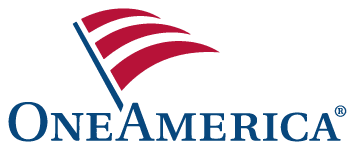As 2025 unfolds, the landscape of federal student loans in the United States is undergoing a significant shift with the impending resumption of collections. For the over 40 million Americans managing these obligations, understanding the nuances of these policy changes is paramount for their financial well-being. How will the restart of federal student loan collections reshape your financial planning, and what steps can you take to navigate this transition effectively?
Understanding the Resumption of Collections
The U.S. Department of Education is poised to recommence collection efforts on all outstanding federal student loans, including those that have been in forbearance or deferment. This move signifies a return to standard repayment protocols and necessitates proactive engagement from borrowers. The Department of Education assures that collection activities will adhere strictly to the legal framework established by the Higher Education Act. This includes providing borrowers with adequate notification and opportunities to address outstanding debts before any enforcement actions are taken. However, it’s crucial to recognize the potential consequences of non-compliance, which can include wage garnishment and the interception of federal tax refunds. (1)
The median debt falls between $20,000 and $24,999. (2) Adding to this challenge is the phenomenon of accruing interest, which can lead to borrowers owing more than their original loan amount, particularly during periods of paused payments or missed obligations. This underscores the critical importance of diligent financial management and proactive loan management.
Empowering Borrowers: Available Tools and Resources
Recognizing the need for support during this transition, the Department of Education has implemented several key tools and resources designed to facilitate effective repayment:
- Income-Driven Repayment (IDR) Plans: These plans offer a lifeline by adjusting monthly payments based on a borrower’s income and family size. For qualifying individuals, payments can be as low as $0, providing crucial financial flexibility.
- SAVE Plan (Saving on a Valuable Education): Building on the principles of IDR, the SAVE plan directly links payment amounts to a borrower’s income and family size, potentially offering an even more affordable and manageable repayment structure.
These initiatives are intended to provide crucial flexibility as borrowers adapt to the resumption of payments. It’s important for borrowers to stay informed about any recent legal challenges that may impact certain aspects of these income-driven repayment options.
Broader Economic Implications and the Road Ahead
The resumption of federal student loan collections is poised to have a tangible impact on individual finances and the broader economy. For borrowers, this will likely necessitate adjustments to monthly budgets and long-term financial planning. On a macroeconomic level, this shift could influence consumer spending patterns and overall economic growth. The increasing prevalence of student loan borrowing over the past two decades makes proactive financial literacy and planning more critical than ever as collections resume.
Preparing for Your Financial Future
As this significant policy change approaches, it’s essential to proactively assess your preparedness. The resumption of collections presents both challenges and opportunities for borrowers to re-evaluate and potentially strengthen their financial standing.
Key considerations to navigate this new landscape successfully include:
- Understanding Your Options: Familiarize yourself with the various repayment plans available, particularly IDR and the SAVE plan, to determine the best fit for your financial situation.
- Staying Informed: Keep abreast of any updates or changes in federal student loan policies and regulations through official sources like the Department of Education’s website.
- Proactive Loan Management: Log in to your student loan servicer’s portal to review your loan details, including the outstanding balance, interest rate, and repayment history.
- Seeking Guidance: Don’t hesitate to reach out to your loan servicer or explore resources for financial counseling and guidance. Consider scheduling a complimentary consultation with a financial professional to discuss your specific situation and develop effective strategies for managing your student loan obligations.
Take Control of Your Financial Future
While the return to student loan collections may seem like a daunting prospect, it also presents an opportunity to take control of your financial future through informed decision-making and proactive management. By understanding your options and leveraging available resources, you can help navigate this transition with greater confidence and potentially work towards your long-term financial goals.
Sources:
(1) “U.S. Department of Education to Begin Federal Student Loan Collections, Other Actions to Help Borrowers Get Back into Repayment.” U.S. Department of Education, https://www.ed.gov/about/news/press-release/us-department-of-education-begin-federal-student-loan-collections-other-actions-help-borrowers-get-back-repayment
(2) Welding, Lyss. “Average Student Loan Debt in 2025.” BestColleges, updated 11 Feb. 2025, www.bestcolleges.com/research/average-student-loan-debt/
This information is being provided only as a general source of information and is not intended to be the primary basis for financial decisions. It should not be construed as advice designed to meet the particular needs of an individual situation. Please seek the guidance of a financial professional regarding your particular financial concerns. Consult with your tax advisor or attorney regarding specific tax issues.







